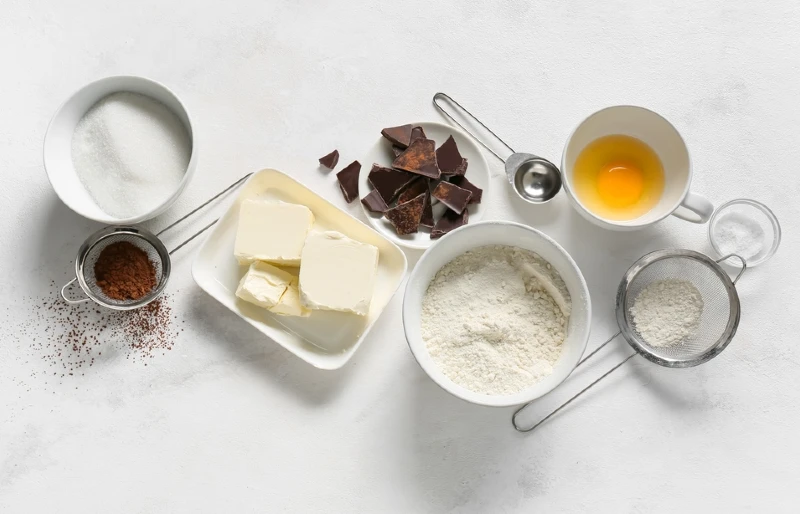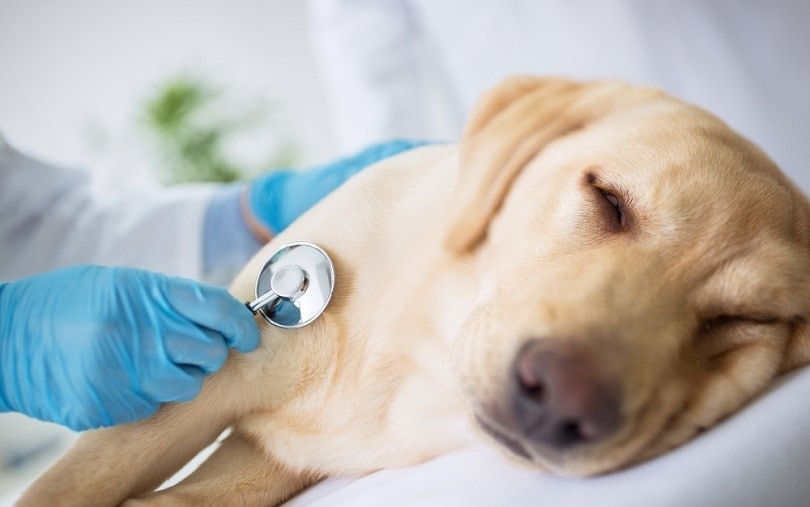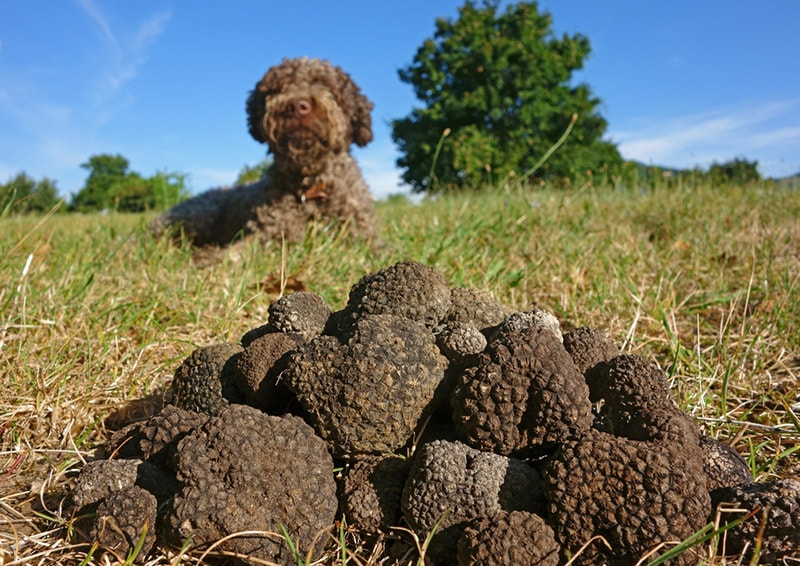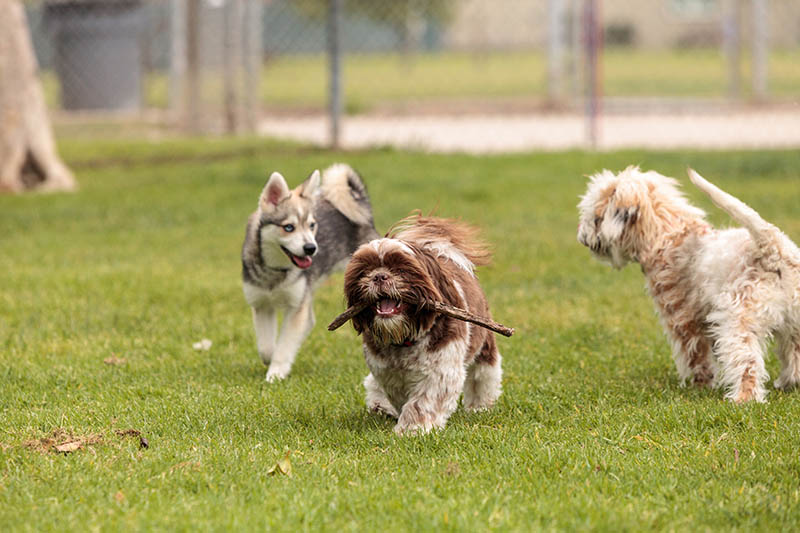Can Dogs Eat Brownies? Vet Reviewed Facts & FAQ
Updated on

A nice brownie can be a tasty treat for people after a long day or a good meal. The chocolatey goodness is hard to deny. Like many of the foods we eat, while we’re kicked back enjoying a fresh brownie, our dogs will most likely be at our side wondering if they’re going to get a bite. As you sit there, enjoying your treat, you may wonder, can dogs eat brownies? How healthy is it to share my chocolate treat with my dog?
Unfortunately, brownies can be toxic to dogs due to the chocolate in them, which means no matter how much they beg, or give you big puppy dog eyes, they cannot share your brownie. You should also avoid leaving brownies, or other types of chocolate, lying around the house where your dogs can easily find it. Let’s learn a bit more about your dog’s relationship with chocolate so you can better understand why brownies are not a healthy snack to give your best friend.
What’s in Chocolate?
Grabbing a chocolate bar at the local convenience store or tossing ingredients together to make some tasty brownies can give us a taste of the chocolate we all love, but do you know how chocolate is made or where it comes from? The fruit of the cacao tree is what provides us with this yummy treat. The cacao tree only grows in tropical climates and is native to South and Central America. After the divine taste of chocolate was realized in the 18th century, cacao plantations began to pop up in other tropical climates to help answer the demand for a treat that would soon be loved worldwide.
The fruit of the cacao tree is roughly the size of a football. Inside this fruit are the cocoa beans. Once the fruits are removed from the trees, they are cracked open and the cocoa beans are removed. The beans then need to ferment for several days. After this, the beans are dried, cleaned, and roasted. The roasting process draws out the amazing taste of the bean while removing the hulls. From this point, the beans are ground into a paste to create the chocolate we love.

The Danger of Brownies to Dogs
While cocoa beans may grow naturally, that doesn’t mean they are safe for all species to consume. Dogs, unfortunately, should steer clear of chocolate and brownies, but why? It’s thanks to two ingredients inside that are harmful to them, theobromine and caffeine. Caffeine isn’t good for your dog, but it’s the theobromine that seems to pose the biggest threat. Both of these chemicals are used as heart stimulants, diuretics, blood vessel dilators, and smooth muscle relaxants in the medical field. Dogs simply cannot metabolize these two chemicals as humans can. Therefore, having it in their system can cause chocolate toxicity.
How Much Chocolate Brownie Is Too Much?
The levels of theobromine change according to the type of chocolate in the brownies. Baker’s chocolate and dark chocolate have the highest theobromine levels out there. They are more concentrated, making them the most dangerous types of chocolate for dogs, with 130–450 mg of theobromine possible per ounce. Milk chocolate, which is one of the most common forms of chocolate, contains 44–58 mg of theobromine per ounce. However, it is still dangerous to your dog but may not cause chocolate poisoning if only a small amount is eaten. White chocolate seems to be the least threatening chocolate out there with only 0.25 mg of theobromine per ounce.
Knowing the levels of theobromine in each type of chocolate may make you think it’s okay to give your pooch safer milk or white chocolate. That isn’t true, however. Besides the theobromine in the chocolate brownies, there is also caffeine, fat, and sugar. As we’ve already mentioned, caffeine can’t be metabolized by your dog easily. It can cause sickness and stomach upset if they eat it. The same can be said for the fat and sugar found inside milk and white chocolate. To keep your dog safe and avoid chocolate poisoning or other ailments, it’s best to avoid chocolate altogether instead of taking chances.
Another concern is that some types of chocolate or brownie recipes contain xylitol. This is highly toxic to dogs and results in hypoglycemia.

Signs of Chocolate Poisoning
If your dog eats brownies or any type of chocolate, signs of chocolate poisoning can begin to appear within 6 to 12 hours and last for several days thanks to the half-life of theobromine. Initial signs may include drooling, panting, increased thirst, increased urination, upset stomach, diarrhea, and vomiting. Thanks to the caffeine inside chocolate, your dog may even show signs of caffeine sensitivity such as an increased heart rate, restlessness, or excitement.
Unfortunately, there are more severe cases of chocolate poisoning. This usually happens when a dog ingests a lot of dark chocolate. Smaller dogs, of course, are in the most danger here as stealing a small piece of dark chocolate could be extremely toxic. Signs of severe chocolate poisoning include those we mentioned above along with irregular heart rate, reduced circulation, lowered body temperatures, lethargy, muscle spasms, seizures, and coma. In the most severe cases, death can be caused by chocolate poisoning, so please avoid giving your dog chocolate of any kind.
What Do I Do If My Dog Eats a Brownie?
Try as we might, accidents can happen. There are dogs out there who are real Houdinis and can navigate their way around the house to get into things we never imagined they could. If your dog accidentally gets into your brownies or other types of chocolate around the house, you need to react correctly to the situation. Here are a few tips to help you navigate the situation.
- Move your dog to safety, away from the brownies, while you clean up any residue or remaining chocolate.
- Try to determine how much your dog ate.
- Determine the type of chocolate ingested.
- Call the Pet Poison Helpline or your veterinarian immediately with the information you’ve gathered.
- If it’s determined that your dog has ingested a dangerous amount of chocolate, take them to a vet immediately.
As with all chances of poisoning in animals, how quickly you react can be the determining factor in your dog’s recovery. Treatments for chocolate poisoning can include inducing vomiting or the use of activated charcoal to absorb the theobromine if a lot has been ingested. Your dog may even be given IV fluids and other methods of support to help them rid their bodies of the theobromine.

Final Thoughts
As you can see, brownies can be quite dangerous for dogs. While you may be tempted to share your favorite treats with your canine pal, it’s always best to learn as much as you can about what dogs can and cannot safely eat. If you have any questions, or if your dog gets into something it shouldn’t, poison helplines and your veterinarian are always there to help you navigate the situation.
See also:
Featured Photo Credit: iMattSmart, Unsplash













